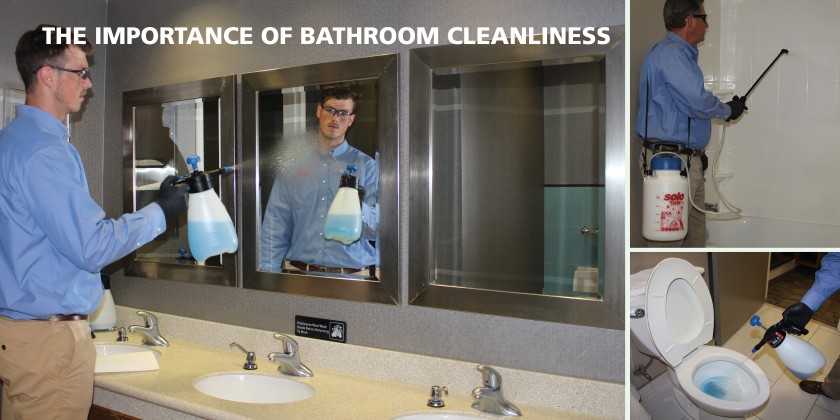
For facilities, the restroom is a black hole of time and resources. Facilities need to work extra hard to ensure bathrooms are always clean. Clean bathrooms signal to the public that facilities care about public health. Scrutiny over bathroom cleanliness has only intensified with Covid-19.
What can facilities do to maintain clean bathrooms?
Even before the pandemic, a dirty bathroom was enough to ruin the impression of a facility. A clean bathroom signals that facilities take public health seriously. The question of how to maintain a clean bathroom isn’t always simple. To begin with, a facility has to consider what products it needs to properly clean and disinfect a bathroom. Next, facilities need to decide where inside a bathroom they need to clean or disinfect and what chemicals are necessary for cleaning or disinfecting. Once a facility has a basic idea of where they plan to clean and with what chemicals, they need to determine how often to clean a bathroom. For the most part, daily cleaning is the bare minimum. Facilities with low traffic don’t need to clean the bathroom more than once per day, but busy facilities like restaurants and hotels often need to clean the bathroom more frequently throughout the day.
Once facilities have established their cleaning process, they’ll also need to consider where to focus once inside the bathroom. First, facilities want to find any visibly soiled areas. Next, the facility will want to check the toilets, sinks, mirrors, and floors for any dirt or debris. If there is no visible dirt or debris, spray and wipe the countertops, mirrors, hand railings, doorknobs, toilets or urinals, and sinks with a cleaner.
What about disinfection?
It’s important to understand the difference between cleaning and disinfection. Cleaning removes visible dirt and debris from a surface, and disinfection kills pathogens on a surface. Disinfection is reserved for “high-touch” surfaces. A high-touch surface has a higher concentration of pathogens and can increase the risk of someone touching the surface and becoming ill.
In the bathroom, faucets, toilets, doorknobs, partition stall doors, non-touchless hand dryers, and countertops are all examples of high-touch surfaces. Another instance where disinfection is necessary is when bodily fluids are present on a surface. Before disinfecting, a surface needs to be clear of any dirt or debris. Then, high-touch surfaces should be spot disinfected and left wet on a surface for a designated time, usually found in the disinfectant’s instructions.
Keeping bathrooms clean is critical for public health. Here is a quick overview of how to clean public restrooms.
Checklist:
- Appropriate chemicals for cleaning and disinfection
- Appropriate tools for cleaning and disinfection
- Established cleaning and disinfection frequency based on the amount of traffic
- Janitorial staff is properly trained on how to use different types of chemicals and tools
- Personal protective equipment for handling chemicals
- Check for soiled surface and/or bodily fluids
- Clean soiled surfaces
- Disinfect high-touch surfaces
- Disinfect surfaces contaminated with bodily fluids
- Leave disinfectants on the surface for their required dwell times

